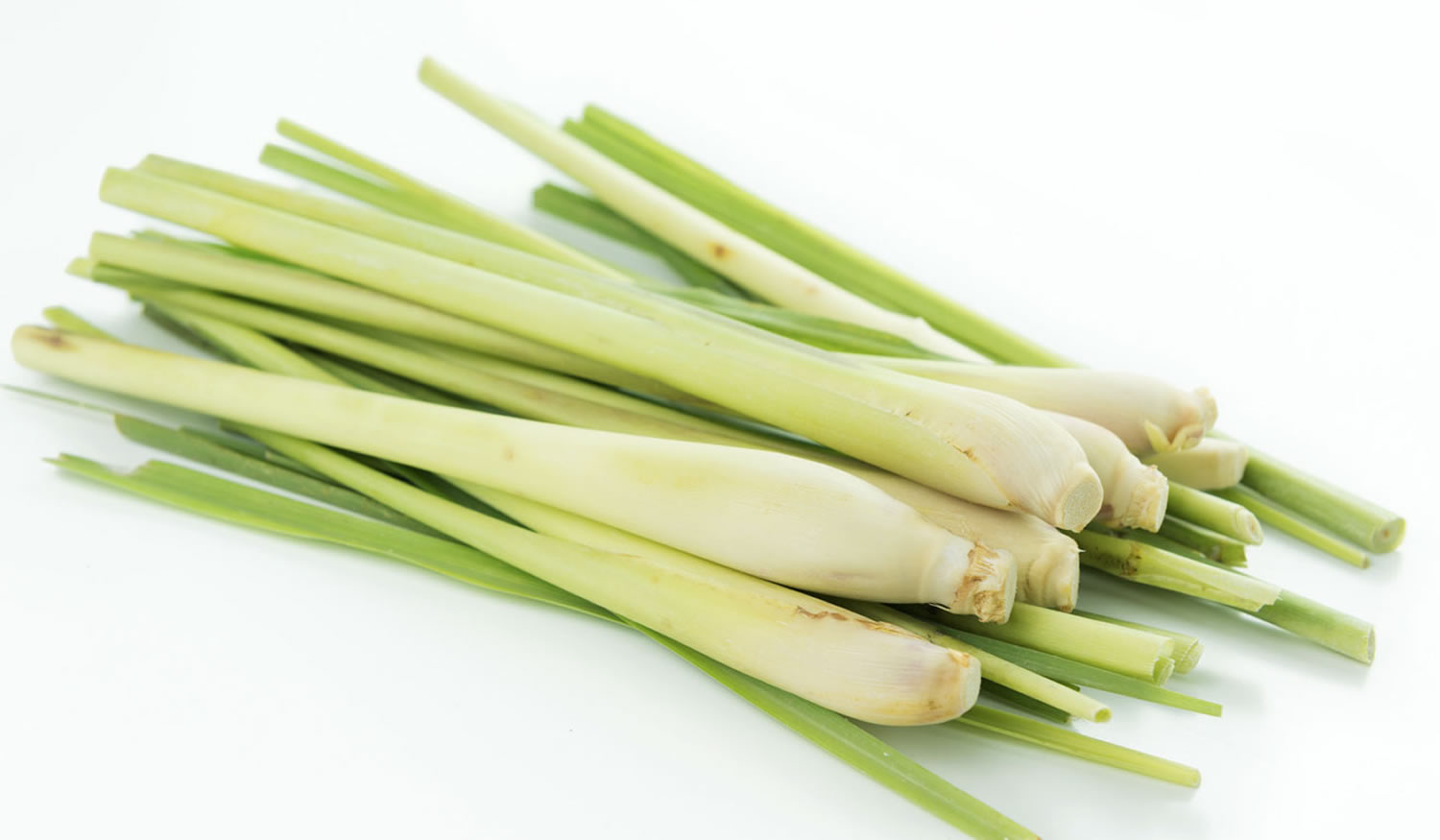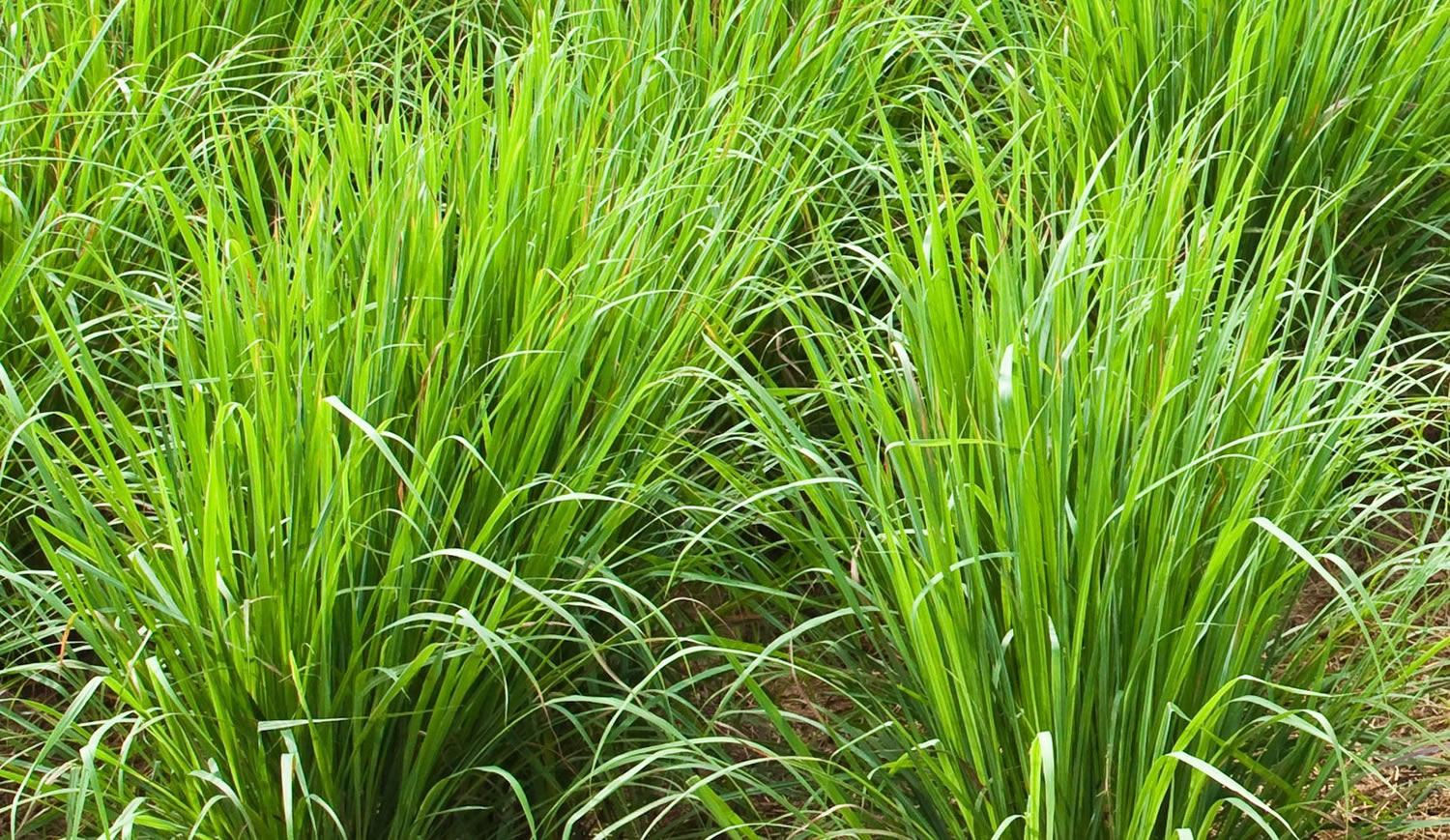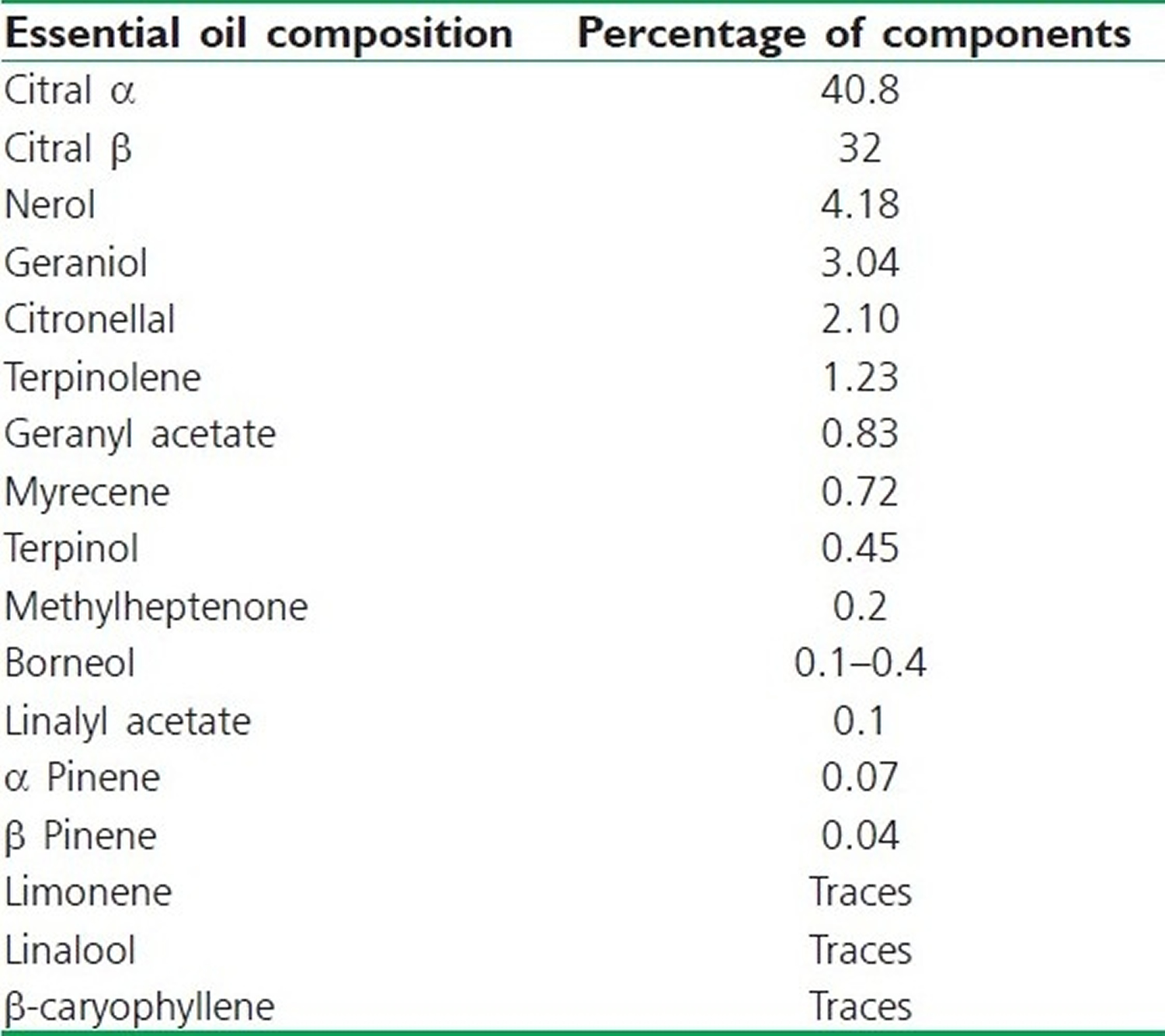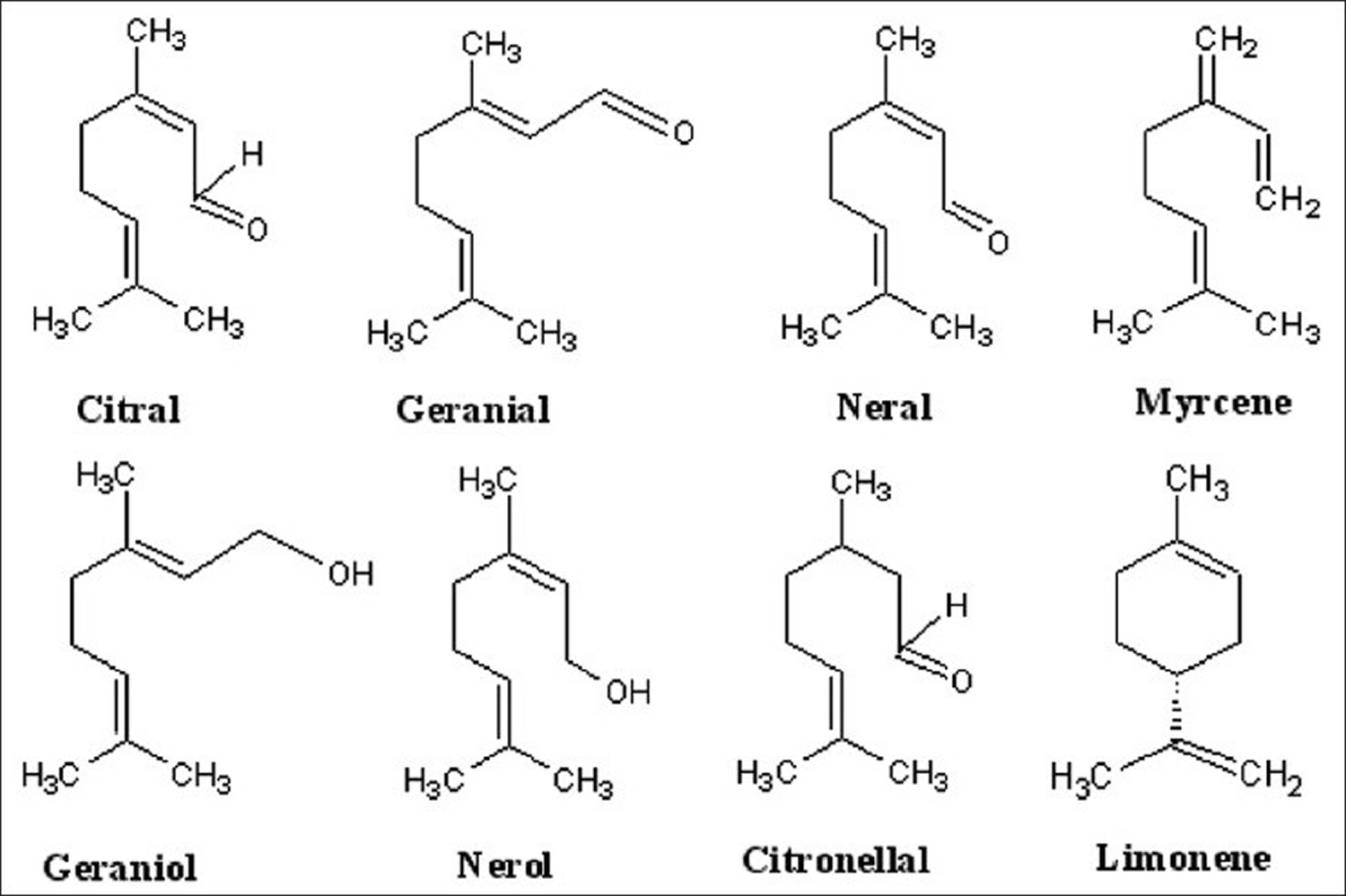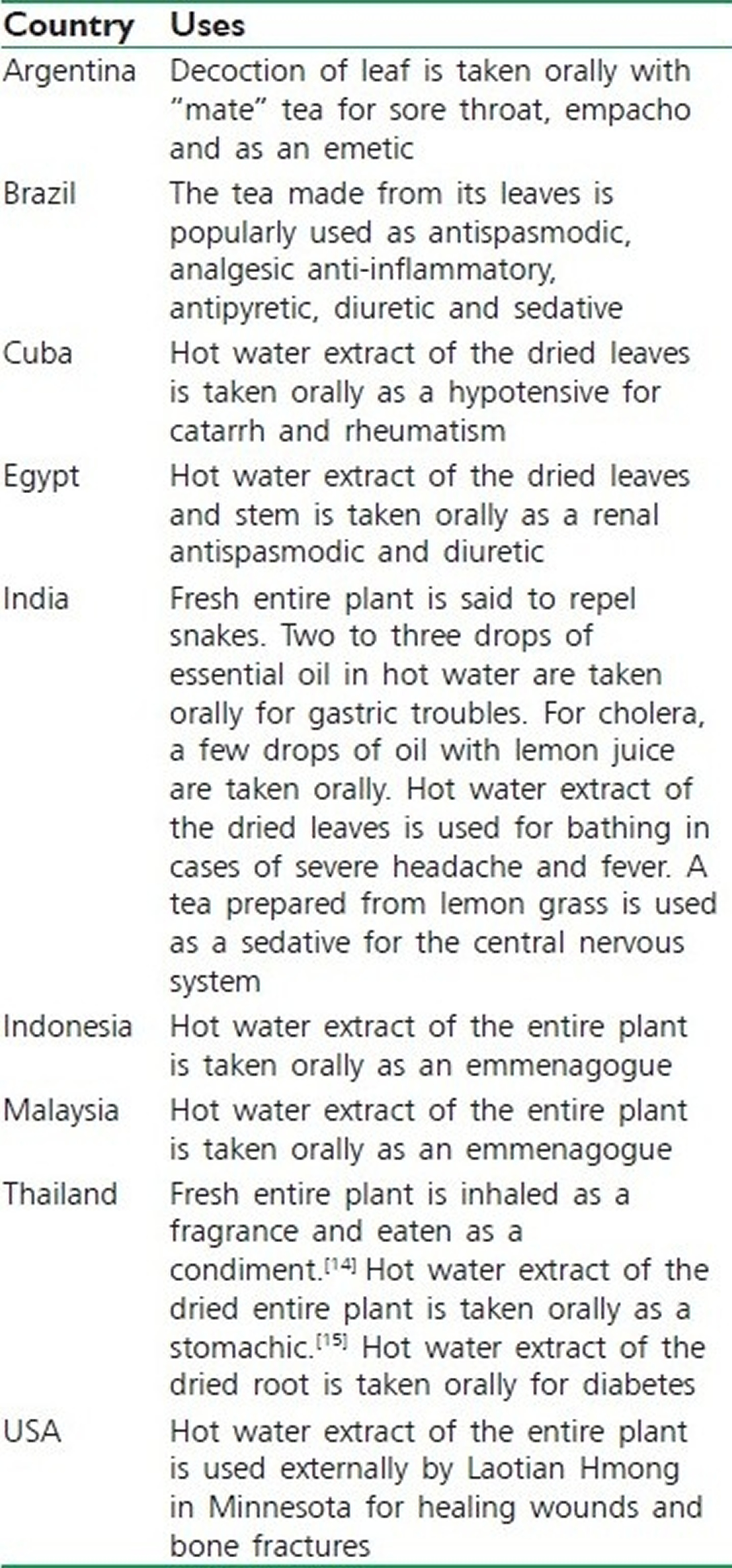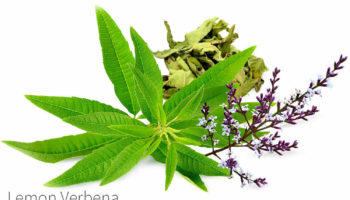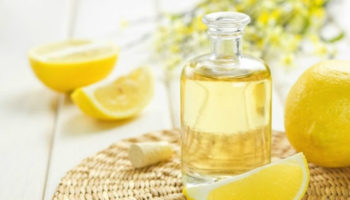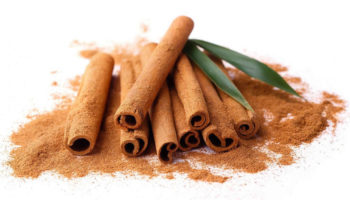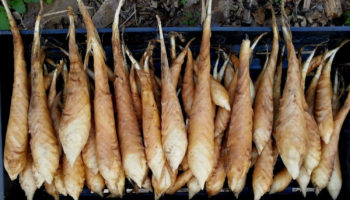Contents
What is lemongrass
Lemongrass (Cymbopogon citratus, Stapf) is a widely distributed and used perennial herb belonging to the Poaceae family 1. Lemongrass other common names include lemon grass, citronella grass, barbed wire grass, silky heads, cha de Dartigalongue, fever grass, tanglad, hierba Luisa, or gavati chahapati, amongst many others. Lemongrass (Cymbopogon citratus, Stapf) is native to Sri Lanka and South India, and is now widely cultivated in the tropical areas of America and Asia. Lemongrass is a tropical grass in the C4 grass family that grows in dense clumps that can grow to 6 ft (1.8 m) in height and about 4 ft (1.2 m) in width, with a short rhizome 2. The lemongrass plant (Figure 1) is used as a fragrance and flavoring agent and in folk medicine as an antispasmodic, hypotensive, anticonvulsant, analgesic, antiemetic, antitussive, antirheumatic, antiseptic and treatment for nervous and gastrointestinal disorders and fevers 3. The lemongrass plant is also used as an antibacterial, antidiarrheal, anti-inflammatory, antimutagenic and antioxidant, but the mode of action for the different bioactivities has not been studied in detail 4. Lemongrass is a widely used as a culinary herb in tropical countries, especially in Southeast Asia and has been extensively consumed for its medicinal, cosmetic, and nutritional effects for centuries in India. Lemongrass (Cymbopogon citratus) has a subtle citrus flavor, resembling that of lemons (Citrus limon) and can be dried and powdered, or used fresh. Lemongrass is commonly used in teas, soups, and curries. Lemongrass is also suitable for use with poultry, fish, beef, and seafood. Lemongrass is often used as a tea in African countries such as Togo, south eastern Ghana Volta Region and the Democratic Republic of the Congo and Latin American countries such as Mexico.
The lemongrass plant also contains reported phytoconstituents such as flavonoids and phenolic compounds, which consist of luteolin, isoorientin 2’-O-rhamnoside, quercetin, kaempferol and apiginin. Laboratory test tube and animal studies indicate that lemongrass (Cymbopogon citratus) possesses various pharmacological activities such as anti-amoebic, antibacterial, antimalarial, antimutagenicity, antimycobacterial, antioxidants, hypoglycemic, antidiarrheal, antifilarial, antifungal and anti-inflammatory properties 3. These results are very encouraging and indicate that lemongrass should be studied more extensively to confirm these results and reveal other potential therapeutic effects.
Lemongrass essential oil is used in aromatherapy. Some of the reported phytoconstituents of lemongrass essential oils are Citral α, Citral β, Nerol Geraniol, Citronellal, Terpinolene, Geranyl acetate, Myrecene and Terpinol Methylheptenone. Lemongrass oil is used as a pesticide and a preservative. Research shows that lemongrass oil has antifungal properties 5 and has a wide range of antimicrobial effects such as anti-amebic, antimycobacterial, and antibacterial against both gram-positive and gram-negative organisms 3. At a concentration ≤2%, lemongrass essential oil could inhibit the growth of several kinds of microorganisms 6. A test tube study by Khongkhunthian et al. 7 showed the antimicrobial activity of lemongrass essential oil against periodontal pathogens, especially the reference strains Actinomyces naeslundii and Porphyromonas gingivalis, which were resistant to tetracycline hydrochloride. Lemongrass essential oil in the form of mouthwash was shown to be an effective adjunct to scaling and root planing as a part of nonsurgical therapy for the treatment of gingivitis 8. The lemongrass essential oil presented remarkable antioxidant and antibacterial activities, which together with its pleasant odor, make this oil a promising natural agent to be used in both the pharmaceutical or food industry 9.
Despite lemongrass essential oil ability to repel some insects, such as mosquitoes, lemongrass oil is commonly used as a “lure” to attract honey bees. Lemongrass works conveniently as well as the pheromone created by the honeybee’s Nasonov gland, also known as attractant pheromones. Because of this, lemongrass oil can be used as a lure when trapping swarms or attempting to draw the attention of hived bees 10.
Lemongrass tea possesses various biological properties described in literature, such as anti-inflammatory, antioxidant, anxiolytic, cytotoxic and antinociceptive activities 11. However, currently there is no test tube or animal studies available to substantiate these claims on the benefits of lemongrass tea.
Figure 1. Lemongrass plant
Figure 2. Lemongrass
Lemongrass essential oil
Lemongrass contains 1% to 2% essential oil on a dry basis and its chemical composition varies as a function of genetic diversity, habitat, and agronomic treatment of the culture 12. The volatile oil obtained from the fresh leaves of lemongrass is widely used in the perfume and cosmetic industries 13. Lemongrass essential oil is mostly composed of monoterpene compounds; citral is a major component, which is a natural mixture of two isomeric acyclic monoterpene aldehydes: cis-isomer neral and trans-isomer geranial 13. Apart from citral, lemongrass essential oil also consists of myrcene, geraniol, and geranyl acetate 14. It has been speculated that essential oils without phenolic groups, such as lemongrass oil, cause membrane disruption due to their lipophilic compounds 15. Lemongrass oil does not only damage the membrane structure through monoterpene diffusion but also facilitates solubility in cell membranes when applied in gaseous form 16. Furthermore, lemongrass essential oil has antidepressant, antioxidant, antiseptic, astringent, nervine, sedative as well as bactericidal, fungicidal, and generally antimicrobial activity against a diverse range of microorganisms including moulds and yeasts, Gram-positive and negative bacteria 17, 18, 19. However, only a limited number of studies have been performed regarding the application of essential oil in fresh produce 19, 20 with very promising results.
The components of the essential oils found in lemongrass have a similar pharmacokinetic properties, including absorption, distribution, metabolism, and excretion. They are quickly absorbed following oral, pulmonary, and dermal administration. Based on the published reports, it can also be inferred that, after absorption from the small intestine, some phytochemicals in lemongrass can undergo oxidation, glucuronidation, sulfation, and/or O-methylation. Excretion is through urine, feces and/or expired volatiles. The biotransformation reactions of lemongrass bioactive constituents are essential for its relatively safe consumption and therapeutic applications. The data available so far warrant further studies evaluating lemongrass pharmacokinetics. Reliable pharmacokinetic data in humans would be critical for a better understanding of the the systemic handling of lemongrass.
Several studies have reported antimicrobial activity of lemongrass against fungi and bacteria such as Acinetobacter baumanii, Aeromonas veronii, Aspergillus niger, Bacillus cereus, B. subtilis, Botrytis cinerea, Colletotrichum coccodes, Corynebacterium equii, Cladosporium herbarum, Enterococcus faecalis, Enterobacter aerogenes, Escherichia coli, Fusarium verticillioides, Klebsiella pneumoniae, Proteus vulgaris, Rhizopus stolonifer, Salmonella Typhimurium, Serratia marcesens, and Staphylococcus aureus, either by agar diffusion method or/and broth dilution 13. Contrary to these results, Adegoke and Odesola 21 reported that Fusarium verticillioides growth was not affected when lemongrass oil was added in culture medium. Moreover, the lemongrass essential oil was reported as more effective than synthetic fungicides like Agrosan GN, Dithane M-43, and copper oxychloride 22. Lemongrass oil has also been found effective against Listeria innocua, E. coli and Salmonella Enteritidis in apple, pear and melon juices at 95 °F (35 °C) 23. In the latter study, complete inhibition of the microbial growth was achieved by 2 μL/mL in apple and pear juices and by 5 μL/mL in melon and tryptone soy broth, highlighting the effect of the food matrix. Azarakhsh et al. 24 studied the effects of lemongrass incorporated into alginate-based edible coating for fresh-cut pineapple and reported a significant reduction of the total plate as well as yeast and mold counts of the coated samples during low-temperature storage and a concomitant increase of the shelf life of the product. In another study 13, application of lemongrass in air packaged rocket salads seemed to have a significant fungicidal (kills fungus) effect on growth of yeast-molds at 10–15 °C and bactericidal (kills bacteria) in enterococci populations at all temperatures.
The chemical composition of the lemongrass essential oil varies according to the geographical origin, compounds such as hydrocarbon terpenes, alcohols, ketones, esters and mainly aldehydes have constantly been registered 25. The lemongrass essential oil (0.2–0.5%, West Indian lemon grass oil) consists of, mainly, citral 26. Citral is a mixture of two stereoisomeric monterpene aldehydes; the trans isomer geranial (40–62%) dominates over the cis isomer neral (25–38%) 27, as shown in Table 1. Chemical structure of the major constituents of lemongrass essential oil (Figure 3) 28.
The antimicrobial effect of lemongrass essential oil is attributed to its citral content, which is the major constituent of the oil (more than 75% by weight) 27. Citral is a natural mixture of isomeric acyclic monoterpene aldehydes geranial (transcitral) and neral (ciscitral) 29. However, both geranial and neral suffer from instabilities resulting from temperature, oxygen, and light that can lead to volatilization, oxidation, or reaction with other formulation ingredients, causing skin irritation 30. Moreover, lemongrass essential oil is characterized by low aqueous solubility 31. These drawbacks limit the practical use of lemongrass essential oil in spite of its various beneficial effects and potent antimicrobial activity.
Table 1. Lemongrass essential oil composition
[Source 3]Figure 3. Chemical structure of the major constituents of lemongrass essential oil
[Source 3]Lemongrass and lemongrass oil health benefits
Lemongrass traditional medicine uses
Table 2. Lemongrass traditional medicine uses
[Source 3]Anti-amebic Effect
The essential oil in broth culture was active on Entamoeba histolytica in a test tube study 32.
Antibacterial Activity
The chromatographic fraction of the lemongrass essential oil in agar plate was active on Bacillus subtilis, Escherichia coli, Staphylococus aureus 33 and Salmonella paratyphi and Shigella flexneri 34. These activities are shown in two of the three main components of the oil identified through chromatographic and mass spectrometric methods. While the α-citral (geranial) and β-citral (neral) components individually elicit an antibacterial action on gram-negative and gram-positive organisms, the third component, myrcene, did not show any observable antibacterial activity on its own 35. The extract was also active when the volatile oil extract was oxidized via the active oxygen method 36. In vitro studies on tomato fruits have indicated complete growth inhibition of Bacillus cinerea and Alternaria arborescens by lemongrass vapors 37.
The lemongrass essential oil stands out from the other essential oils (e.g. lavender, juniper berry, eucalypt, rosemary and lemon-eucalypt) in this study 9, because lemongrass essential oil demonstrated greatest inhibition of the growth of the bacterial strains tested.
Antidiarrheal Activity
Lemongrass stalk decoction reduced the fecal output in a dose-dependent manner 38.
Antifilarial Activity
Fresh lemongrass leaves were active on Setaria digitata 39. Setaria is a genus of parasitic roundworms that infect domesticated mammals such as pigs, camels, cattle and horses. Some species also infect wild mammals such as deer and antelope.
Antifungal Activity
Lemon grass oil is active against such dermatophytes such as Trichophyton mentagrophytes, Trichophyton rubrum, Epidermophyton floccosum and Microsporum gypseum 40 and is among the most active agents against human dermatophytes. Other studies reported that lemon grass oil is active against keratinophilic fungi, 32 ringworm fungi 41 and food storage fungi 42. Lemongrass oil is also effective as a herbicide and as an insecticide because of these naturally occurring antimicrobial effects.
Anti-inflammatory Activity
The hot water extract of the dried leaves administered intragastrically to rats was active when compared with carrageenin-induced pedal edema 43.
Antimalarial Activity
The essential oils of Cymbopogon citratus were found to produce 86.6% suppression in the growth of Plsmodium berghei when compared with chloroquine (taking inhibition by chloroquine as 100%) 44.
Antimutagenicity
The ethanolic extract of lemon grass extract exhibits an antimutagenic activity in various models 45 and retards the growth of fibrosarcoma cells transplanted in mice in association with the prevention of lung metastasis 46. The lemongrass plant extract is known to show inhibition on the formation of azoxymethane-induced DNA adducts and aberrant crypt foci in the rat colon 47. Inhibitory effects of the lemongrass plant extract on the early phase of hepato-carcinogenesis after initiation with diethylnitrosamine were seen in 344 male Fischer rats 48.
Antimycobacterial Activity
The essential oil in agar plate was active on Mycobacterium smegaris 49.
Analgesic Effect
The lemongrass essential oil possesses a significant antinociceptive activity. Comparing the results obtained with three different experimental models of pain (hot-plate, acetic acid-induced writhings and formalin test), scientists speculated that the essential oil acts both at the peripheral and at the central levels 50. Another study examined the effect of citronellal (is one of the main compound responsible for the lemon-scent of many of lemongrass plant) on inflammatory pain induced by different stimuli in mice as well as the involvement of the NO-cGMP-ATP-sensitive K+ channel pathway 51. Citronellal (25, 50 or 100 mg/kg, intraperitoneal.) exhibited a significant reduction of the mechanical nociception induced by tumor necrosis factor α (TNF-α) and carrageenan in all studied doses 51. Citronellal also significantly decreased the mechanical nociception in the dopamine test at doses of 25 and 100 mg/kg, and in the prostaglandin E type 2 (PGE2) test only at higher dose (100 mg/kg). Interestingly, pretreatment with l-NAME or glibenclamide reversed the antinociceptive effect of the Citronellal (100 mg/kg) on PGE2-induced mechanical nociception, suggesting that Citronellal inhibits mechanical nociception through the involvement of NO-cGMP-ATP-sensitive K+ channel pathway. Taken together, these results show the potential of lemongrass citronellal for the treatment of pain 52.
Citral is a mixture of two isomers, cis-isomer neral and trans-isomer geranial, and is found in lemongrass oil. The analgesic (antinociceptive) action of citral was demonstrated in mice submitted to different experimental models of acute and chronic nociception 51. Pretreatment with citral (25, 100 or 300 mg/kg, orally) inhibited formalin-induced licking in both the neurogenic and inflammatory phases (inhibition of 54% and 65% at 300 mg/kg, respectively); prevented and reduced mechanical hyperalgesia without producing any significant motor dysfunction, with a maximum effect at dose of 100 mg/kg; inhibited the nociceptive response (citral 100 mg/kg) induced by glutamate (inhibition of 49%) and phorbol 12-myristate 13-acetate (PMA; inhibition of 54%); markedly attenuated the pain response (citral 100 mg/kg) induced by N-methyl-d-aspartic acid (NMDA; inhibition of 54%), trans-1-amino-1,3-dicarboxycyclopentane (ACPD; inhibition of 77%), substance P (inhibition of 42%) or cytokine TNF-α (inhibition of 72%); and attenuated the nociception (citral 100 mg/kg) to involve significant activation of serotonergic systems (via 5-HT2A receptor). Together, these results display the potential of citral for the treatment of inflammatory and neuropathic pain 53.
Antiprotozoan Activity
A dose-dependent antiprotozoan effect of the essential oil of Cymbopogon citratus could be observed on two strains of Crithida deanei 54.
Ascaricidal Activity
The fresh leaf essential oil has an ascaricidal activity 55.
Antioxidant Effects
Methanol, MeOH/water extracts, infusion and decoction of lemongrass were shown to have free radical scavenging effects by measuring the bleaching of the 1, 1-diphenyl-2-picryl-hydrazyl (DPPH) radical, scavenging of the superoxide anion and inhibition of the enzyme xanthine oxidase and lipid peroxidation in human erythrocytes 56. The lemongrass oil is the one with the best capacity to scavenge the 1, 1-diphenyl-2-picryl-hydrazyl (DPPH) free radicals, presenting an IC50 (concentration providing 50% of inhibition) value of 0.03 ± 0.01 (v/v), that together with a value of antioxidant activity index of 183.37 ± 22.00 allows to classify lemongrass oil as having a very strong antioxidant activity 9.
Hypocholesterolemic Effect
The elevated cholesterol concentration was significantly lowered in the animals given the plant extract. This reduction was found to be dose dependent. This result shows that the extract possesses a hypocholestecolemic potential 57.
Hypoglycemic and Hypolipidemic Effects
A fresh lemongrass leaf aqueous extract administered in normal rats lowered the fasting plasma glucose and total cholesterol, triglycerides, low-density lipoproteins and very low-density lipoprotein dose dependently while raising the plasma high-density lipoprotein level in the same dose-related fashion, but with no effect on the plasma triglyceride levels 58.
Larvicidal Activity
The fresh lemongrass leaf essential oil has a larvicidal activity 59. A methanol-leaf extract of lemongrass shows various degree of repellency and larvicidal effect against a malaria vector, Anopheles arabiensis 60. Karunamoorthi K, et al 61 also reported the use of essential oil of lemongrass as a repellent. It can provide protection against bites of Anopheles darlingi and Mansonia spp. Morsy et al. 62 found solvent extracts of lemongrass have larvicidal activity against third instar larvae of Chrysomyia albiceps. Lemongrass extract is found to reduce a cattle tick, Boophilus microplus, infestation on naturally infested Holstein cows 63. Pushpanathan et al 64 reported distilled oils extracted from lemongrass had larvicidal and ovicidal activity against the mosquito Culex quinquefasciatus. Jarongsak et al 65 reported that essential oil of lemongrass at the rate of 75 µg/cm3 has the highest inhibitory effect, resulting in 97.3±4.7 mortality. The findings of this study 60 demonstrated that lemongrass has the potential to be a chemical control agent against house dust mites. Comparing lemongrass and neem, it appears that there was no difference in topical mortalities of D. pteronyssinus from exposure to the concentrations of lemongrass and neem up to 12.50%; lemongrass was more effective than neem at the higher concentrations 60. Generally, topical mortalities of Dermatophagoides farinae (house dust mites) due to lemongrass were higher than that due to neem. Contact mortalities of lemongrass were always higher than neem against both species of mites 60.
Neurobehavioral Effect
The essential oil was evaluated for sedative/hypnotic activity through pentobarbital sleeping time, anxiolytic activity by elevated plus maze and light/dark box procedures and anticonvulsant activity through seizures induced by pentylenetetrazole and maximal electroshock. The essential oil was effective in increasing the sleeping time, the percentage of entries and time spent in the open arms of the elevated plus maze as well as the time spent in the light compartment of the light/dark box. In addition, the essential oil delayed clonic seizures induced by pentylenetetrazole and blocked the tonic extensions induced by maximal electroshock, indicating the elevation of the seizure threshold and/or blockage of the seizure spread 66.
- Ethnopharmacology, phytochemistry, and biological activities of Cymbopogon citratus (DC.) Stapf extracts. Chin J Nat Med. 2015 May;13(5):321-37. doi: 10.1016/S1875-5364(15)30023-6. https://www.sciencedirect.com/science/article/pii/S1875536415300236[↩]
- Reitz R. Flora ilustrada catarinense. Itajaí American Fern Journal Publisher. 1982:1309–14[↩]
- Shah G, Shri R, Panchal V, Sharma N, Singh B, Mann AS. Scientific basis for the therapeutic use of Cymbopogon citratus, stapf (Lemon grass). Journal of Advanced Pharmaceutical Technology & Research. 2011;2(1):3-8. doi:10.4103/2231-4040.79796. https://www.ncbi.nlm.nih.gov/pmc/articles/PMC3217679/[↩][↩][↩][↩][↩][↩]
- Crawford M, Havson AW, Koker MES. The structure of cymbopogon, a novel treterpenoid from lemongrass. Tetrahedron Lett. 1975;35:3099–128[↩]
- Shadab, Q., Hanif, M. & Chaudhary, F.M. (1992) Antifungal activity by lemongrass essential oils. Pak. J. Sci. Ind. Res. 35, 246-249.[↩]
- Antimicrobial activity of essential oils and other plant extracts. Hammer KA, Carson CF, Riley TV. J Appl Microbiol. 1999 Jun; 86(6):985-90. https://www.ncbi.nlm.nih.gov/pubmed/10438227/[↩]
- Khongkhunthian S, Sookkhee S, Okonogi S. Antimicrobial activities against periodontopathogens of essential oil from lemon grass (Cymbopogon citratus (DC.) Stapf CMU. J Nat Sci. 2009;8:11–21[↩]
- Susanto SA, Oktavianti TA, Wijaya Y, Wira V, Paramitta VA. Increased glutathione level in saliva of moderate gingivitis patients after lemongrass (cymbopogon citratus) essential oil gargling. Asia Pac Dent Stud J. 2010;1:45–52[↩]
- Luís Â, Duarte AP, Pereira L, Domingues F. Chemical Profiling and Evaluation of Antioxidant and Anti-Microbial Properties of Selected Commercial Essential Oils: A Comparative Study. Skaltsa E, ed. Medicines. 2017;4(2):36. doi:10.3390/medicines4020036. https://www.ncbi.nlm.nih.gov/pmc/articles/PMC5590072/[↩][↩][↩]
- Cymbopogon. https://en.wikipedia.org/wiki/Cymbopogon[↩]
- Olorunnisola S.K., Asiyanbi H.T., Hammed A.M., Simsek S. Biological properties of lemongrass: An overview. Int. Food Res. J. 2014;21:455–462.[↩]
- Carlson L.H.C., Machado R.A.F., Spricigo C.B., Pereira L.K., Bolzan A. Extraction of lemongrass essential oil with dense carbon dioxide. J. Supercrit. Fluids. 2001;21:33–39. doi: 10.1016/S0896-8446(01)00085-7.[↩]
- Hadjilouka A, Polychronopoulou M, Paramithiotis S, Tzamalis P, Drosinos EH. Effect of Lemongrass Essential Oil Vapors on Microbial Dynamics and Listeria monocytogenes Survival on Rocket and Melon Stored under Different Packaging Conditions and Temperatures. Comi G, ed. Microorganisms. 2015;3(3):535-550. doi:10.3390/microorganisms3030535. https://www.ncbi.nlm.nih.gov/pmc/articles/PMC5023255/[↩][↩][↩][↩]
- Bonada de Silva C., Guterres S.S., Weisheimer V., Schapoval E.E.S. Antifungal activity of the lemongrass oil and citral against Candida species. Braz. J. Infect. Dis. 2008;12:63–66 https://www.ncbi.nlm.nih.gov/pubmed/18553017[↩]
- Mendoza L., Wilkens M., Urzua A. Antimicrobial study of the resinous exudates and of diterpenoids and flavonoids isolated from some Chilean Pseudognaphalium (Asteraceae) J. Ethnopharmacol. 1997;58:85–88. doi: 10.1016/S0378-8741(97)00084-6. https://www.ncbi.nlm.nih.gov/pubmed/9406895[↩]
- Sivakumar D., Bautista-Banos S. A review on the use of essential oils for postharvest decay control and maintenance of fruit quality during storage. Crop Prot. 2014;64:27–37. doi: 10.1016/j.cropro.2014.05.012.[↩]
- Naik M.I., Fomda B.A., Jaykumar E., Bhat J.A. Antibacterial activity of lemongrass (Cymbopogon citratus) oil against some selected pathogenic bacterias. Asian Pac. J. Trop. Med. 2010;3:535–538. doi: 10.1016/S1995-7645(10)60129-0.[↩]
- Hammer K.A., Carson C.F., Riley T.V. Antimicrobial activity of essential oils and other plant extracts. J. Appl. Microbiol. 1999;86:985–990. doi: 10.1046/j.1365-2672.1999.00780.x https://www.ncbi.nlm.nih.gov/pubmed/10438227[↩]
- Arrebola E., Sivakumar D., Bacigalupo R., Korsten L. Combined application of antagonist Bacillus amyloliquefaciens and essential oils for the control of peach postharvest diseases. Crop Prot. 2010;29:369–377. doi: 10.1016/j.cropro.2009.08.001[↩][↩]
- Azarakhsh N., Osman A., Ghazali H.M., Tan C.P., Adzahan N.M. Lemongrass essential oil incorporated into alginate-based edible coating for shelf-life extension and quality retention of fresh-cut pineapple. Postharvest Biol. Technol. 2014;88:1–7. doi: 10.1016/j.postharvbio.2013.09.004.[↩]
- Adegoke G.O., Odesola B.A. Storage of maize and cowpea and inhibition of microbial agents of biodeterioration using the powder and essential oil of lemon grass (Cymbopogon citratus) Int. Biodeter. Biodegr. 1996;6:81–84. doi: 10.1016/0964-8305(95)00062-3[↩]
- Mishra A.K., Dubey N.K. Evaluation of some essential oils for their toxicity against fungi causing deterioration of stored food commodities. Appl. Environ. Microbiol. 1994;60:1101–1105. https://www.ncbi.nlm.nih.gov/pmc/articles/PMC201445/pdf/aem00021-0061.pdf[↩]
- Antimicrobial activity of essential oils on Salmonella enteritidis, Escherichia coli, and Listeria innocua in fruit juices. Raybaudi-Massilia RM, Mosqueda-Melgar J, Martín-Belloso O. J Food Prot. 2006 Jul; 69(7):1579-86. https://www.ncbi.nlm.nih.gov/pubmed/16865889/[↩]
- Azarakhsh N., Osman A., Ghazali H.M., Tan C.P., Adzahan N.M. Lemongrass essential oil incorporated into alginate-based edible coating for shelf-life extension and quality retention of fresh-cut pineapple. Postharvest Biol. Technol. 2014;88:1–7. doi: 10.1016/j.postharvbio.2013.09.004[↩]
- Abegaz B, Yohanne PG, Diete KR. Constituents of the essential oil of Ethiopian Cymbopogon citratus stapf. J Nat Prod. 1983;146:423–6[↩]
- Ming L, Figueiredo R, Machado S, Andrade R. In: Proceedings of the International Symposium on Medicinal and Aromatic Plants. Mexico: Acta Horticulturae Leiden; 1996. Yield of essential oil of and citral content in diff erent parts of lemongrass leaves (Cymbopogon citratus (DC.) Stapf.) Poaceae; pp. 555–9.[↩]
- LC determination of citral in Cymbopogon citratus volatile oil. Rauber Cda S, Guterres SS, Schapoval EE. J Pharm Biomed Anal. 2005 Mar 9; 37(3):597-601. https://www.ncbi.nlm.nih.gov/pubmed/15740922/[↩][↩]
- Comparison of extraction methods for marker compounds in the essential oil of lemon grass by GC. Schaneberg BT, Khan IA. J Agric Food Chem. 2002 Mar 13; 50(6):1345-9. https://www.ncbi.nlm.nih.gov/pubmed/11879000/[↩]
- Microparticles containing lemongrass volatile oil: preparation, characterization and thermal stability. Weisheimer V, Miron D, Silva CB, Guterres SS, Schapoval EE. Pharmazie. 2010 Dec; 65(12):885-90. https://www.ncbi.nlm.nih.gov/pubmed/21284257/[↩]
- Nur Ain, AH Farah, Diyana MH, Zaibunnisa AH. Encapsulation of lemongrass (cymbopogon citratus) oleoresin with β-cyclodextrin: phase solubility study and its characterization; Proceedings of the 2nd International Conference on Biotechnology and Food Science; 2011 Apr 1–3; Bali Island, Indonesia. Singapore: LACSIT Press; 2011.[↩]
- Rungsardthong Ruktanonchai U, Srinuanchai W, Saesoo S, Sramala I, Puttipipatkhachorn S, Soottitantawat A. Encapsulation of citral isomers in extracted lemongrass oil with cyclodextrins: molecular modeling and physicochemical characterizations. Biosci Biotechnol Biochem. 2011;75(12):2340–2345. https://www.jstage.jst.go.jp/article/bbb/75/12/75_110523/_pdf/-char/en[↩]
- Blasi DV, Debrot S, Menound PA, Gendre L, Schowing J. Amoebicidal effect of essential oils in vitro. J Toxicol Clin Exp. 1990;10:361–73. https://www.ncbi.nlm.nih.gov/pubmed/2130180[↩]
- Melo SF, Soares SF, Costa DR, Silva DC, Oliveira DM, Bezerra RJ, et al. Effect of the Cymbopogon citratus, Maytenus ilicifolia and Baccharis genistelloides extracts against the stannous chloride oxidative damage in Escherichia coli. Mutat Res. 2001;496:33–8. https://www.ncbi.nlm.nih.gov/pubmed/11551478[↩]
- Syed M, Khalid MR, Chaudhary FM. Essential oils of Graminae family having antibacterial activity Part 1. (Cymbopogon citrates, C.martinii and C.jawarancusa oils. Pak J Sci Ind Res. 1990;33:529–31.[↩]
- Onawunmia GO, Yisak WA, Ogunlana EO. Antibacterial constituents in the essential oil of Cymbopogon citratus (DC.) Stapf. J Ethnopharmacol. 1984;12:279–86 https://www.ncbi.nlm.nih.gov/pubmed/6442749[↩]
- Wannissorn B, Jarikasem S, Siriwangchai T. Antibacterial properties of essential oils from Thai medicinal plants. Fitoterapia. 2005;76:233–6 https://www.ncbi.nlm.nih.gov/pubmed/15752638[↩]
- Plotto A., Roberts D.D., Roberts R.G. Evaluation of plant essential oils as natural postharvest disease control of tomato (Lycopersicon esculentum) Acta Hortic. 2003;628:737–745[↩]
- Tangpu V, Yadav TA. Some Important Folklore Medicinal Plants Used by Tangkhul Nagas of Ukhrul District, Manipur. TX, USA: Recent Progress in Medicinal Plants; 2006.[↩]
- Suresh M, Rai RK. Cardol: The antifilarial principle from Anacardium occidentale. Curr Sci. 1990;59:477–9.[↩]
- Wannissorn B, Jarikasem S, Soontorntanasart T. Antifungal activity of lemon grass and lemon grass oil cream. Phytother Res. 1996;10:551–4[↩]
- Abe S, Sato Y, Inoue S, Ishibashi H, Maruyama N, Takizawa T, et al. Anti-Candida albicans activity of essential oils including Lemongrass (Cymbopogon citratus) oil and its component, citral” Nippon Ishinkin Gakkai Zasshi. 2003;44:285–91 https://www.ncbi.nlm.nih.gov/pubmed/14615795[↩]
- Misrha AK, Dubey NK. Evaluation of some essential oils for their toxicity against fungi causing deterioration of stored food commodities. Appl Environ Microbiol. 1994;l60:1101–5 https://www.ncbi.nlm.nih.gov/pmc/articles/PMC201445/[↩]
- Carbajal D, Casaco A, Arruzazabala L, Gonzalez R, Tolon Z. Pharmacological study of Cymbopogon citratus leaves. J Ethnopharmacol. 1989;25:103–7 https://www.ncbi.nlm.nih.gov/pubmed/2716341[↩]
- Tchoumbougnang F, Zollo PH, Dagne E, Mekonnen Y. In Vivo Antimalarial Activity of Essential Oils from Cymbopogon citratus and Ocimum gratissimum on Mice Infected with Plasmodium berghei. Planta Medica. 2005;71:20–3 https://www.ncbi.nlm.nih.gov/pubmed/15678368[↩]
- Vinitketkumnuen U, Puatanachokchai R, Kongtawelert P, Lertprasertsuke N, Matsushima T. Antimutagenicity of lemon grass (Cymbopogon citratus, Stapf) to various known mutagens in Salmonella mutation assay. Mutat Res. 1994;341:71–5. https://www.ncbi.nlm.nih.gov/pubmed/7523944[↩]
- Puatanachokchai R. Antimutagenicity, cytotoxicity and antitumor activity from lemon grass (Cymbopogon citratus, Stapf) extract, Master’s thesis, Faculty of Medicine. Thailand: Chiang Mai University; 1994.[↩]
- Suaeyun R, Kinouchi T, Arimochi H, Vinitketkumnuen U, Ohnishi Y. Inhibitory effects of lemon grass (Cymbopogon citratus Stapf) on formation of azoxymethane-induced DNA adducts and aberrant crypt foci in the rat colon. Carcinogenesis. 1997;18:949–55.[↩]
- Puatanachokchai R, Kishida H, Denda A, Murata N, Konishi Y, Vinitketkumnuen U, et al. Inhibitory effects of lemon grass (Cymbopogon citratus, Stapf) extract on the early phase of hepatocarcinogenesis after initiation with ethylnitrosamine in male Fischer 344 rats. Cancer Lett. 2002;183:9–15 https://www.ncbi.nlm.nih.gov/pubmed/12049809[↩]
- Lemos TL, Matos FJ, Alencar JW, Craveiro AA, Clark AM, Chesney JD. Antibacterial activity of essential oils of Brazailian plants. Phytother Res. 1990;4:82–4.[↩]
- Viana GS, Vale TG, Pinho RS, Matos FJ. Antinociceptive effect of the essential oil from Cymbopogon citratus in mice. J Ethnopharmacol. 2000;70:323–7 https://www.ncbi.nlm.nih.gov/pubmed/10837994[↩]
- De Cássia da Silveira e Sá R, Lima TC, da Nóbrega FR, de Brito AEM, de Sousa DP. Analgesic-Like Activity of Essential Oil Constituents: An Update. International Journal of Molecular Sciences. 2017;18(12):2392. doi:10.3390/ijms18122392. https://www.ncbi.nlm.nih.gov/pmc/articles/PMC5751100/[↩][↩][↩]
- Santana M.T., Oliveira M.B., Santana M.F., de Sousa D.P., Santana D.G., Camargo E.A., Oliveira A.P., Almeida J.R.G.S., Quintans-Júnior L.J. Citronellal, a monoterpene present in Java citronella oil, attenuates mechanical nociception response in mice. Pharm. Biol. 2013;51:1144–1149. doi: 10.3109/13880209.2013.781656 https://www.ncbi.nlm.nih.gov/pubmed/23795810[↩]
- Nishijima C.M., Ganev E.G., Mazzardo-Martins L., Martins D.F., Rocha L.R.M., Santos A.R.S., Hiruma-Lima C.A. Citral: A monoterpene with prophylactic and therapeutic anti-nociceptive effects in experimental models of acute and chronic pain. Eur. J. Pharmacol. 2014;736:16–25. doi: 10.1016/j.ejphar.2014.04.029 https://www.ncbi.nlm.nih.gov/pubmed/24792822[↩]
- Pedroso RB, Ueda-Nakamura T, Prado B, Filho D, Cortez DA, Cortez LE, et al. Biological Activities of Essential Oil Obtained from Cymbopogon citratus on Crithidia deanei. Acta Protozoologica. 2006;45:231–40.[↩]
- Chungsamarnvart N, Jiwajinda S. A caricidal activity of volatile oil from lemon and citronella grasses on tropical cattle ticks. Kasetsart J Nat Sci. 1992;26:46–51.[↩]
- Cheel J, Theoduloz C, Rodriäguez J, Hirschmann SG. Free Radical Scavengers and Antioxidants from Lemongrass (Cymbopogon citratus Stapf) J Agric Food Chem. 2005;53:2511–7 https://www.ncbi.nlm.nih.gov/pubmed/15796587[↩]
- Agbafor KN, Akubugwo EI. Hypocholesterolaemic effect of ethanolic extract of fresh leaves of Cymbopogon citratus (lemon grass) African J Biotechnol. 2007;6:596–8.[↩]
- Adeneye AA, Agbaje EO. Hypoglycemic and hypolipidemic effects of fresh leaf aqueous extract of Cymbopogon citratus Stapf in rats. J Ethnopharmacol. 2007;112:440–4. https://www.ncbi.nlm.nih.gov/pubmed/17513076[↩]
- Cavalcanti ES, Morais SM, Lima MA. Larvicidal activity of essential oils from Brazillian plants against Aedes aegypti L. Mem Inst Oswaldo Cruz. 2004;99:541–4 https://www.ncbi.nlm.nih.gov/pubmed/15543421[↩]
- Hanifah AL, Awang SH, Ming HT, Abidin SZ, Omar MH. Acaricidal activity of Cymbopogon citratus and Azadirachta indica against house dust mites. Asian Pacific Journal of Tropical Biomedicine. 2011;1(5):365-369. doi:10.1016/S2221-1691(11)60081-6. https://www.ncbi.nlm.nih.gov/pmc/articles/PMC3614201/[↩][↩][↩][↩]
- Karunamoorthi K, Ilango K. Larvicidal activity of Cymbopogon citratus (DC) Stapf. and Croton macrostachyus Del. against Anopheles arabiensis Patton, a potent malaria vector. Eur Rev Med Pharmacol Sci. 2010;14:57–62. https://www.ncbi.nlm.nih.gov/pubmed/20184090[↩]
- Morsy TA, Mazyad SA, el-Sharkawy IM. The larvicidal activity of solvent extracts of three medicinal plants against third instar larvae of Chrysomia albiceps. J Egypt Soc Parasitol. 1998;28:699–709. https://www.ncbi.nlm.nih.gov/pubmed/9914694[↩]
- Heimerdinger A, Olive CJ, Molento MB, Agnolin CA, Ziech MF, Scaravelli LF, et al. et al. Alcoholic extract of lemongrass (Cymbopogon citratus) on the control of Boophilus microplus in cattle. Rev Bras Parasitol Vet. 2006;15:37–39. https://www.ncbi.nlm.nih.gov/pubmed/16647001[↩]
- Pushpanathan T, Jebanesan A, Govindarajan M. Larvicidal, ovicidal and repellant activities of Cymbopogon citratus Stapf (Graminae) essential oil against the filarial mosquito Culex quinquefasciatus (Say) (Diptera: Culicidae) Trop Biomed. 2006;23:208–212 https://www.ncbi.nlm.nih.gov/pubmed/17322823[↩]
- Mohd Irfan Naik, Bashir Ahmad Fomda, Ebenezar Jaykumar, Javid Ahmad Bhat. Antibacterial activity of lemongrass (Cymbopogon citratus) oil against some selected pathogenic bacterias. Asian Pac J Trop Med. 2010;3(7):535–538.[↩]
- Blanco MM, Costa CA, Freire AO, Santos JG, Costa IM. Neurobehavioral effect of essential oil of Cymbopogon citratus in mice. Phytomedicine. 2007;16:265–70. https://www.ncbi.nlm.nih.gov/pubmed/17561386[↩]
